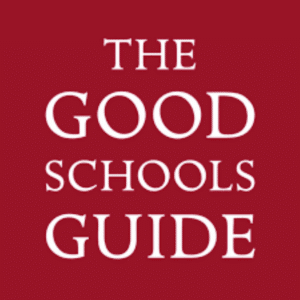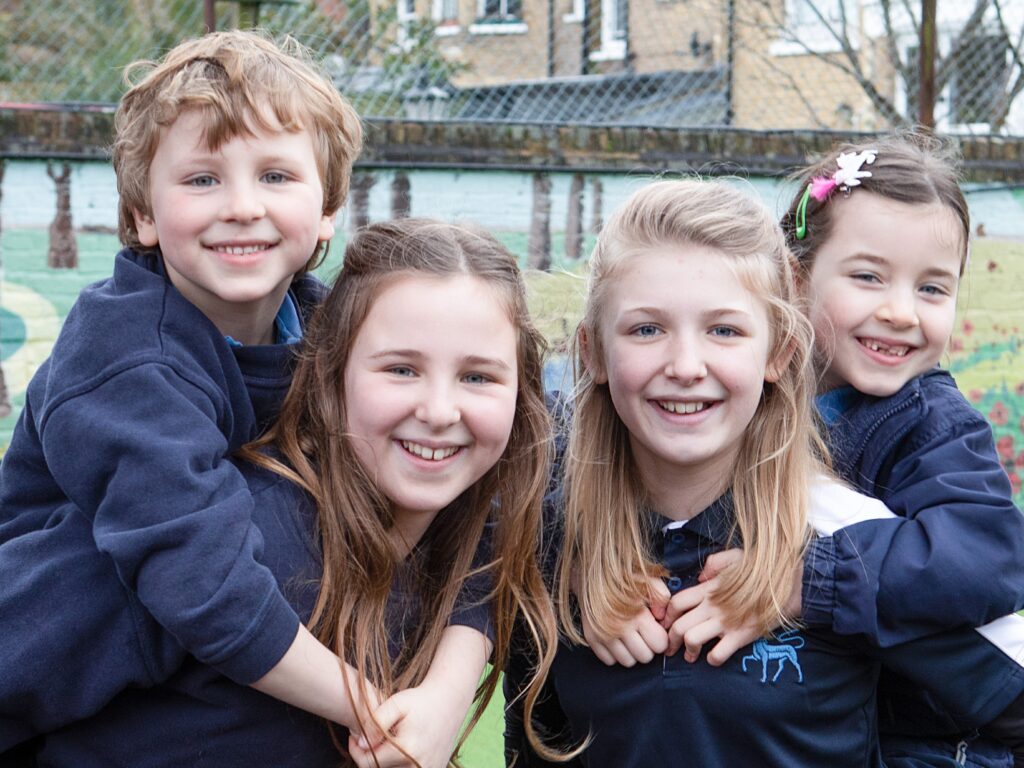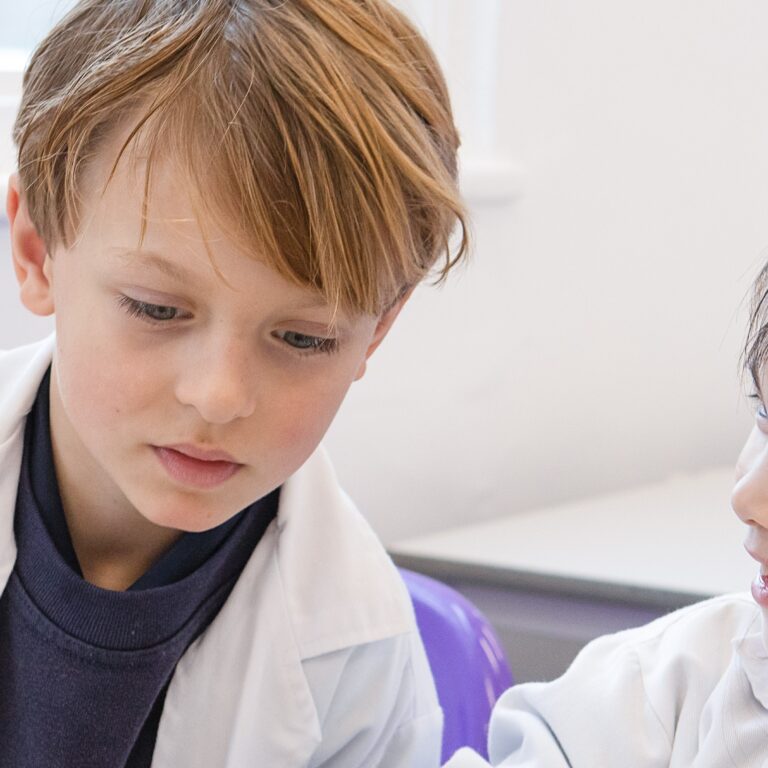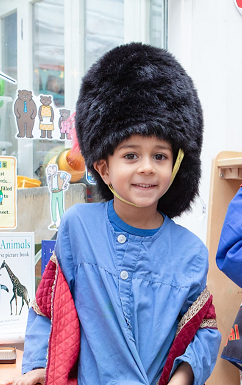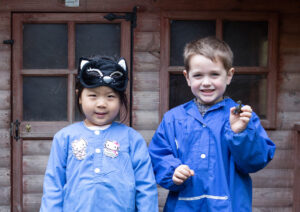Our view
Set up by group of prescient parents in 1970, school sits in former residential Victorian villa. Commensurately generously proportioned, it is compact but not cramped. Nursery and reception accommodated in former coach house in large playground and multipurpose pitch. Shrewd purchasing of adjoining gardens has ensured generous supply of outdoor space, constantly occupied, and littered with colourful climbing frames. Neighbouring open spaces, Kew Gardens and Richmond Park, used frequently and to best effect. Japan was theme of recent annual arts week and so children we met had been to Japanese garden at Kew. Entrance hall instantly welcoming – felt rather like walking into a spacious private house with beautiful original floor tiles. Goldfish, named by the children, also on hand in the hall to welcome visitors.
Wide driveway ideally suited to drop off and collection. Faithful to Unicorn’s founding purpose, parental presence very strong. School is incorporated as limited liability company with share capital guaranteed by members – one parent from each family is a member, but guarantee mercifully limited to £1. Governing board has co-chairs, one of whom is parent. Parents take clubs, give talks, help on trips, with reading and even transport. One mother reckoned that ‘almost all’ had DBS checks. Head occasionally worries that working parents might be put off by being unable to commit but says participation is emphatically optional, although parents say it tends to attract families ‘who want to be involved in their children’s development and broader interests.’ ‘It’s a completely family run school,’ said one. Many remain intensely loyal, as do former members of staff – the Mottley Crew (named after past member of staff) were gathering at the school for lunch the day after our visit. A growing and significant number of parents were themselves pupils. Past pupils frequently return as gap year students. As head put it, ’People get very passionate about this school.’
Classes named by colours of rainbow instead of numbers, year 6 being ultra violet. Infuses place with immediate sense of creativity, which endures throughout school. Nothing is sacrificed on altar of 11+. Music, drama, sport, art all continue at full throttle. School openly shields children from exam stress and strongly discourages parents from even talking about 11+ until year 5. ‘It teaches what it preaches,’ confirmed one, ‘it’s all about being happy and kind. Very free-range.’
Still, words like unicorn and rainbow can be misleading – this is not a fluffy, cuddly academic vacuum, but a serious place of learning and development. Children are thoroughly tracked and assessed from the outset, though entirely unbeknownst to them. Impressive outcomes ‘come naturally,’ as one teacher put it. Children ‘start learning through play so when the time comes for academics, they love it.’ Touch typing for all in year 4. Cosy library slots for all.
Gently increasing specialist teaching eases children out of nursery and reception into higher years where all art, PE, music, French, science, drama and computing taught by specialists. Lots of bilingual children, a very few of whom need EAL support. Twenty-five children have one-to-one specialised support, most with dyslexia or moderate learning difficulties and some with autism. Those needing support are excellently catered for by the much-praised full-time SENCo, supported by a part time colleague, an OT and a speech and language specialist. One of them is also school listener. ‘They really know their stuff,’ confirmed one parent. One EHCP, in process of being applied for.
Ingenious timetabling, prescribed by compressed space, means that higher years are taught in half classes. Consequently small numbers, about eight or nine, and more focused attention. Far from fragmenting school, this engenders mixed grouping which is very popular with children. Epitomised by class mentoring system whereby older class is paired up with younger one. Younger children entertain and encourage reminiscing whilst older ones read, guide and lead by example. Produces considerate and thoughtful children, we sensed. We were struck by natural, inherent good manners. Two of our guides immediately offered to help distribute equipment when we gate crashed a science lesson. Pollination was being studied, scrutinising real flowers sent in by parents. ‘It’s all about proving things to make sure the children understand.’
Topic based learning highly prized and tangible. Study of Tudors strengthened by study of Tudor music, Tudor art and, in year 5, a production of either Macbeth or A Midsummer Night’s Dream, deftly staged at assembly for rest of school, including reception, and again that evening for parents. Our visit coincided with former. Props and programme made by children and parents. Within minutes of performance ending, the large room was transformed into the dining room, where we savoured a delicious hot lunch with heaps of choice – and soon after that, it became a dance hall! Musical theatre club is popular and was in throes of rehearsing Matilda when we visited – it was even managing to lure eager children to rehearsals on Sundays. Children’s musical performances integral part of theatrical productions, with head of music at the piano.
Music housed in a pod at bottom of garden, where children were sat in a circle, singing and using coloured beakers for rhythm. Music boundlessly energetic, inclusive and ‘very creative’ throughout, say parents. Music lessons on curriculum, eg recorder in years 2 and 3 – and more than three-quarters have private music lessons in the practice rooms that adjoin music pod. We watched an uplifting recital in that same multipurpose hall by the Unicorn singers, the school chamber choir – and we did indeed ‘keep a melody in (our) heart all day long.’ One of the small singers had come straight in from the playground, complete with football gloves; another still bore the sparkle of the make-up from earlier play. No picture-perfect children here, just happy ones. Casual, ‘not swanky’ uniform, blue polo shirt and loose navy sweatshirt, with smocks in reception, underlines this.
Art housed in large, airy, bright room at top of coach house with heaps of resources, and background music playing when we dropped in. Extending Japanese theme, delicate Sakura trees were being painted with earbuds on canvas.
Sport taken seriously but joyfully. One afternoon of PE a week, and another of sports. All onsite until year 3, when children are bused to Barnes Hockey Pitch and Sports Grounds, 10 minutes away, for football, hockey, netball and cricket, all mixed. Good record of matches against other schools. ‘I just love matches,’ enthused an eager child. Excellence cultivated by after school squad clubs. Particularly impressive is swimming for the whole school on Fridays, with older children again helping younger ones.
Outdoor and community life universally fostered. Local litter pick under way. Those who can are encouraged to walk, bike or scoot to school. Forest school every other week up to end of year 2 and notably constant use made of playground.
Numerous before and after school clubs on offer, in addition to ringfenced Thursday afternoons when clubs are timetabled. We witnessed motorised cars being built and enjoyed a cream tea baked by cooking club. Increasing number of two income families makes head ‘very aware of need for wrap around care,’ with breakfast and late clubs already in place.
Residential trips from year 3 culminate in Cumbria for year 6, after a post 11+ programme which includes learning to navigate public transport with an independent, but supervised, trip to Buckingham Palace. Children must return with a selfie to prove success. ‘No slacking on the core subjects but lots of enrichment,’ as one teacher put it. Ski trip every two years, preceded by dry slope practice locally.
Entire pastoral approach based on giving, not taking away. House points generously doled out for anything from kindness and thoughtfulness to effort and achievement. Four colourful jars in hall remind children which one is on course to win weekly cup, presented at assembly. When things do go wrong, a calm exploration of the facts and how to prevent recurrence is undertaken. Infrequent bespoke action plans forestall most grave infringements. One year 5 pupil said she could not remember ‘anybody getting into serious trouble.’ Children strongly encouraged to regulate own behaviour. ‘I wouldn’t want to make my teacher angry,’ asserted a lively boy. We saw one class resolving disagreements of little consequence with a show of rock, paper, scissors. All pervasive is a sense of kindness. ‘It’s the biggest ethos,’ beamed a girl with broad smile. Mutual respect reigns.
Money matters
Fees fractionally cheaper than similar local schools. Bursaries up to 100 per cent available (unusually) from nursery (exceptionally clear guidance on website) – eight taken up when we visited. Parent events help raise money for bursary fund (and charities).
The last word
Undilutedly loyal to its roots, the school has seamlessly advanced into its second half century. ‘The ethos hasn’t changed for 50 years, and it’s great,’ reported one satisfied old boy and current parent. Not for the rigidly conformist, it offers a fresh breath and breadth of air. Varied and visionary timetable, together with wise, impassioned staff sets children up to evolve into free thinking, decent and kind members of society. A triumph.
